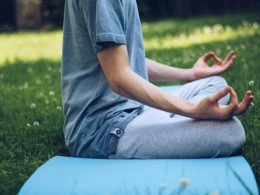As we age, it’s important to prioritize our health and well-being. One of the best ways to do this is through exercise! While some may believe that seniors should take it easy and avoid physical activity, research has shown that staying active can actually improve overall health and boost independence. In this blog post, we’ll explore the many benefits of exercise for seniors, as well as some tips for getting started with an exercise routine. Let’s dive in!
The health benefits of exercise for seniors
Regular exercise has a plethora of benefits for seniors. Firstly, it can help prevent chronic diseases such as heart disease, diabetes and arthritis by improving cardiovascular health and reducing inflammation in the body.
Exercise also helps to improve balance and coordination, which is particularly important for older adults who are at an increased risk of falls. Strength training exercises can also help to maintain muscle mass and bone density, reducing the risk of osteoporosis.
In addition to physical benefits, exercise has numerous mental health benefits too! Regular physical activity can reduce symptoms of anxiety and depression while improving mood overall. It’s no secret that staying active keeps us feeling energized!
Furthermore, engaging in regular exercise provides an opportunity for social interaction with others which promotes feelings of community and belonging – a key factor in maintaining cognitive function as we age.
Incorporating regular exercise into your routine brings about many benefits that will promote better long-term health outcomes both physically AND mentally.
The best exercises for seniors
As we age, exercise becomes increasingly important for maintaining overall health and mobility. However, it’s important to choose exercises that are safe and effective for seniors. Here are some of the best exercises for older adults:
1. Walking: One of the simplest forms of exercise, walking is great for improving cardiovascular health and can be done almost anywhere.
2. Strength training: Building muscle mass through resistance training can help improve balance and prevent falls in seniors.
3. Yoga: This low-impact form of exercise combines stretching with meditation, making it a great choice for both physical and mental wellness.
4. Swimming or water aerobics: These activities take pressure off joints while still providing an excellent workout that improves cardiovascular health.
5. Tai Chi: This ancient Chinese practice involves slow movements combined with deep breathing techniques to promote relaxation and flexibility.
Whatever type of exercise you choose, make sure to start slowly and listen to your body’s signals if something feels uncomfortable or painful. With regular activity, seniors can maintain their independence longer while enjoying improved overall health and wellbeing.
How to get started with an exercise program
Starting an exercise program can be daunting, especially for seniors who may have never been active before or have not exercised in a long time. However, it is important to remember that any level of activity is better than none at all. Before starting any exercise routine, it’s essential to consult with your doctor first to ensure you are healthy enough for physical activity.
Once you have the green light from your doctor, start by setting realistic goals for yourself. These goals should be specific and achievable so that you don’t get discouraged along the way. Walking is an excellent low-impact exercise that most seniors can do and will help increase strength and flexibility gradually.
It’s crucial to find exercises that you enjoy doing as this will make sticking with them much easier. Consider incorporating activities like dancing or swimming into your workout routine as these can be fun ways to stay active.
Don’t forget about balance exercises either! Simple movements such as standing on one foot and holding onto a chair for support can help prevent falls among older adults.
Joining an exercise class or finding a workout buddy can provide motivation and accountability while adding some socialization benefits too. Remember always to listen to your body during workouts; if something feels uncomfortable or painful, stop immediately and seek advice from a professional trainer or healthcare provider.
The benefits of staying active and independent
Staying active and independent as a senior can bring numerous benefits to one’s physical and mental health. Engaging in regular exercise routines can help seniors maintain their strength, balance, flexibility, and mobility. This not only reduces the risk of falls but also improves overall quality of life.
Exercise has been shown to boost brain function in older adults by improving memory, cognitive function, and reducing the risk of dementia. It also promotes better sleep patterns that are essential for maintaining good mental health.
By staying active and independent through exercise, seniors can reduce their dependence on others for daily activities such as cooking or cleaning. They may even be able to continue driving longer if they maintain their physical fitness levels.
Aside from the physical benefits of exercising regularly, it is also an excellent way for seniors to socialize with others who share similar interests. Social interaction is vital for emotional well-being among older adults who may feel isolated or lonely.
In summary, staying active and independent through exercise offers many advantages to seniors’ physical health while promoting emotional well-being by providing opportunities for socialization.
Conclusion
Exercise is one of the most important things that seniors can do to maintain their health and independence. Exercise has a wide range of benefits for seniors including improved cardiovascular health, increased strength and flexibility, reduced risk of falls and injuries, better cognitive function and more.
By incorporating regular exercise into their daily routine through activities like walking, swimming or yoga, seniors can stay active and independent for longer. The key is to start slow and gradually build up intensity over time. It’s also important to seek guidance from a medical professional before starting any new exercise program.
Ultimately, staying active as we age is crucial in maintaining our overall well-being. By making exercise a priority in our lives today, we can ensure a happier healthier future tomorrow!












